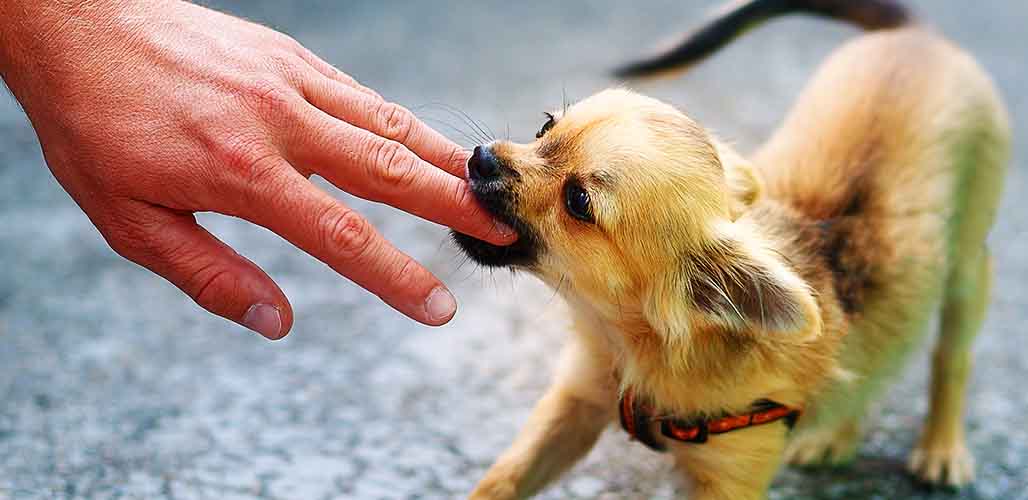Know Your Pooch
VK Joshi
The writer is former director, GSI, and an avid animal lover. His understanding of man's best friend comes from over six decades of dedicated association with it
A biting dog can be a source of stress and even fear for its owner. While dogs are naturally playful and sometimes use their mouths to explore the world, persistent or aggressive biting can become a dangerous behaviour. The good news is that with patience, understanding, and consistent training, you can manage and control biting behaviour effectively. But before working on solutions, it’s important to understand why dogs bite in the first place.
Dogs rarely bite without reason. Usually, their biting is a form of communication, defence, or response to their environment. Some of the common causes include:
1. Fear or anxiety: Fearful dogs may bite as a defensive mechanism. If they feel cornered, threatened, or startled, biting becomes their way of protecting themselves. For instance, a rescue dog that has experienced abuse may lash out when someone approaches too quickly.
2. Territorial or protective instincts: Dogs are naturally territorial. They may bite to protect their space, food, toys, or even their family. This is particularly common in breeds bred for guarding roles.
3. Pain or medical issues: Sometimes, a dog bites simply because it’s in pain. Arthritis, dental problems, or injuries can make a normally calm dog reactive when touched in sensitive areas.
4. Lack of socialisation: Puppies that are not properly socialised may grow into adult dogs who are fearful or unsure in new situations. Lack of exposure to people, other animals, and environments can make them prone to biting when overwhelmed.
5. Play behaviour gone wrong: Puppies especially use their mouths while playing. If they’re not taught bite inhibition, this playful nipping can become painful and dangerous as they grow older.
6. Resource guarding: A dog that feels the need to guard food, bones, or toys may snap or bite when someone approaches what they consider their possession.
7. Predatory instincts: Certain quick movements, like children running, can trigger a dog’s prey drive. This can lead to chasing, nipping, or biting.
8. Frustration or overstimulation: Just like people, dogs can become overwhelmed. Rough play, too much excitement, or even being restrained on a leash can sometimes result in “redirected aggression” where the dog bites out of frustration.
How to calm and control a biting dog
Once you understand the underlying reasons, you can start implementing strategies to address biting behaviour. Remember, consistency is key, and patience is essential.
1. Identify the trigger: Observe carefully when your dog tends to bite. Is it during playtime? When strangers visit? When touched on a certain body part? Identifying the trigger will help you tailor the solution to the root cause.
2. Early training and bite inhibition: Puppies should be taught bite inhibition early on. When a puppy bites too hard during play, let out a sharp “ouch” and stop interacting for a moment. This teaches the puppy that biting ends the fun. With repetition, they learn to control the force of their bite.
3. Socialisation: Expose your dog to different environments, people, and other animals from an early age in a positive way. A well-socialised dog is less likely to react with fear and aggression. For adult dogs, controlled and gradual exposure works best.
4. Exercise and mental stimulation: A bored or under-exercised dog is more likely to misbehave. Daily walks, interactive toys, and puzzle feeders keep your dog engaged and reduce frustration that can lead to biting.
5. Training commands: Teach your dog basic commands like sit, stay, leave it, and drop it. These commands can redirect a biting dog’s focus and help maintain control in stressful situations.
6. avoid physical punishment: Hitting or shouting at a biting dog often makes the behaviour worse, especially if fear is the root cause. Positive reinforcement—rewarding calm, non-biting behaviour with treats and praise—is far more effective.
7. Use chew toys: Redirecting your dog’s biting instinct to appropriate chew toys helps protect your hands and belongings. Ensure the toys are safe and durable for your dog’s size.
8. Calm environment: If overstimulation is an issue, provide your dog with a calm space. A quiet corner, a crate, or a separate room where they can retreat reduces stress and biting incidents.
9. Teach gentle play: If your dog gets too rough during play, stop the game immediately. Over time, they will learn that gentle play keeps the fun going, while biting ends it.
10. Manage resources: If resource guarding is the issue, never forcibly take items away. Instead, practice trading—offer a high-value treat in exchange for the toy or food. Gradually, the dog will learn to trust you and give things up willingly.
11. Professional help: If biting persists or is severe, consult a certified dog trainer or animal behaviourist. Sometimes, professional intervention is necessary to create a structured plan.
12. Medical check-up: Always rule out health problems. A veterinary exam can determine if pain or illness is the cause behind sudden biting behaviour.
Special Considerations
Biting puppies vs. Adult dogs
• Puppies: Most often bite out of playfulness and teething. With consistent redirection and training, they usually grow out of it.
• Adult Dogs: Biting is more serious, as it often stems from fear, aggression, or guarding instincts. It requires more deliberate training and sometimes professional guidance.
Dogs around children
Children are especially vulnerable to dog bites. Always supervise interactions. Teach children not to pull ears or tails, not to disturb dogs while eating, and not to run and scream around them. Similarly, teach dogs to remain calm around kids and reward gentle interactions.
Preventing biting before it starts
• Start training and socialisation early.
• Expose your dog to a variety of safe situations to build confidence.
• Teach them to handle frustration by rewarding calm behaviour.
• Keep vaccinations and vet check-ups up to date to prevent pain-related aggression.
Finally
A biting dog is not a hopeless case. Dogs bite to communicate discomfort, fear, or needs they can’t express in other ways. By identifying the root cause and responding with patience, positive reinforcement, and consistent training, you can calm and control this behaviour. Remember, the goal is not just to stop the biting but to build trust and a strong, safe relationship between you and your dog.
With understanding, proper training, and sometimes professional support, your biting dog can learn to become a calm, gentle, and loving companion. I had a miniature pinscher. At the age of one year, she started biting the ankles of visitors at home. It was quite an embarrassment. Once I identified the reason, which was a territorial issue, I began to gently train her. And in three months, she was a perfect pet. The moral of the story is to never lose hope and be patient and calm. ([email protected])
















Leave a comment